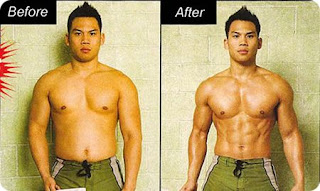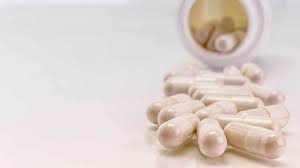Scientific Ways to Get Lean Muscle Mass
If you're someone who works with weight at the gym, you will not only lose some fat, but also gain some lean muscle mass.
In this article; Muscle growth mechanisms and why most women cannot gain large amounts of muscle mass even though they work heavily.
Although there are different types of muscles such as the heart muscle (your heart), there is some proven information only about skeletal muscles whose functioning is curious. For example, skeletal muscle consists of thread-like myofibrils, muscle fiber-forming sarcomeres, and basic contraction units.
650 skeletal muscles in the human body contract when they receive signals from motive neurons triggered from a part of a cell called the sarcoplasmic reticulum. The motive neurons tell your muscles to contract, and the better your muscles receive signals from these neurons, the stronger their contractions will be.
A person who exercises powerlifter can lift very heavy loads even if he does not look very muscular. This is due to the ability of these athletes to activate their motive neurons and to stretch their muscles better. So this explains the reason why powerlifters are able to lift more weight from them, even though they are relatively small compared to bodybuilders. The mobility unit reinforcement (neurons) also helps explain why some movements start to come more easily after practice, and most initial strength gains are in the first sets. Muscle growth tends to occur more steadily after this initial period of strength gain. Because the person becomes able to activate the muscles more easily after this period.
Physiology of Muscle Growth
After exercising, your body repairs or replaces damaged muscle fibers through a cellular process that fuses muscle fibers together to form new muscle protein strands or myofibrils. These repaired myofibrils increase in thickness and number to create muscle hypertrophy (growth). (1) Muscle growth occurs when the rate of muscle protein synthesis is greater than the rate of muscle protein breakdown. However, this adaptation does not occur when lifting weights. Instead, it occurs while you are resting.
So how do you add muscles to your muscle cells? This is where satellite cells come in and act like stem cells for your muscles. When they become active, they help to add more nuclei to muscle cells and thus directly contribute to the growth of myofibrils (muscle cells). The way in which these cells activate may be the variable that allows some "good genetics" people to develop large muscles and makes others "hard-earners." (2)
In one of the most interesting studies in the last 5 years, researchers; He found that those who are "extraordinarily responsive" to muscle development can activate 23% of satellite cells with 58% myofiber hypertrophy obtained from an exercise. The humble responders with a growth of 28% activated 19% of the satellite cells. However, the point to be noted is that some of the people known as "non-responders" in the study showed 0% growth and in parallel they activated 0% of their satellite cells. Based on the results of this study; The more one can activate these satellite cells, the more growth will be achieved. So how can you activate these satellite cells to increase muscle growth?
Muscle Building Techniques
The main thing underlying all the progress of natural muscle growth; to achieve the ability to constantly put more stress on the muscles. This stress is an important component that plays a role in the growth of a muscle and for distributing homeostasis in your body. The stress and the subsequent breakdown in homeostasis causes three main mechanisms that promote muscle growth.
1. Muscle Tension
In order to create muscle growth, you need to apply more stress to your muscles than they have encountered before. So how do you do that? The main way to do this is by gradually lifting heavier weights. This additional strain on the muscle allows growth factors including mTOR activation and satellite cell activation, helping them to cause changes in the chemistry of the muscle.
2. Muscle Damage
If you experience any sense of pain after exercising, you will have experienced local muscle damage from exercising. This local muscle damage causes the release of inflammatory molecules and immune system cells that activate satellite cells for action. However, you don't have to feel pain for this to happen. Instead, the damage from training needs to be found in your muscle cells. Typically, this pain decreases over time through other mechanisms.
3. Metabolic Stress
When a person experiences a burning sensation or “pump” effect in their muscles while doing sports, they have started to experience the effects of metabolic stress. After bodybuilders said that the “pump” effect they experienced caused their muscles to grow, scientists began to investigate this issue. After further investigation, they concluded that the "pump" state, as they were called, was a significant effect.
Metabolic stress causes cell swelling around the muscle, which contributes to muscle growth without increasing the size of muscle cells. This is due to the addition of muscle glycogen, which helps the muscles to swell with connective tissue development. This type of growth is known as sarcoplasmic hypertrophy and is one of the ways people can have the appearance of bigger muscles without increasing their strength.
How Do Hormones Affect Muscle Growth?
Hormones are another component that is largely responsible for muscle growth and repair due to their role in regulating satellite cell activity. Insulin Growth Factor (IGF) -1, specifically Mecho-Growth Factor (MGF) and testosterone, are the two most important mechanisms that promote muscle growth.
Testosterone is the main hormone on the mind of most weight training people. There seems to be a validity of the idea that testosterone increases protein synthesis, inhibits protein degradation, activates satellite cells and stimulates other anabolic hormones. Although most of the testosterone must be required in the body and is therefore unsuitable for use (up to 98%), your strength training will not only release more testosterone, it will also make your muscle cells receptors more sensitive to free testosterone. Testosterone can also stimulate growth hormone responses by increasing the presence of neurotransmitters in the damaged fiber region that help activate tissue growth.
The hormone insulin (IGF) increases protein synthesis, facilitates glucose uptake, removes amino acids (protein building blocks) for uptake into skeletal muscles, and activates satellite cells once again to increase muscle growth. In this way, insulin regulates the amount of muscle mass development.
Why Do Muscles Need Rest to Grow?
If you do not provide your body with adequate rest or nutrition, you can reverse the anabolic process you experience post-workout and put your body in a catabolic or destructive process. The response of muscle protein metabolism to resistance exercise takes 24-48 hours. Therefore, the interaction between protein metabolism and each meal consumed during this period will determine the effect of diet on muscle hypertrophy. Remember that gender, age, and genetic factors influence the developmental level of your muscles. This situation will be given as an example; men have more testosterone than women, which allows men to build bigger and stronger muscles.
Why Doesn't Grow Muscles Quickly?
Muscle growth takes time and is a relatively slow process for the majority of people. Usually, people do not see visible growth for a few weeks or months. Because, the first change in the body takes place in your nervous system so that you have the ability to activate your muscles.
In addition, humans have different range of hormonal output, muscle fiber type, muscle fiber count, and genetics, as well as different satellite cell activation that can limit muscle growth. In the process of building muscles, the rate of muscle protein synthesis must exceed the rate of muscle protein breakdown to make sure you are doing your best. This requires you to get an adequate source of protein (especially essential amino acids) and carbohydrates to help facilitate the cellular process of rebuilding destroyed muscle tissue.




Comments
Post a Comment